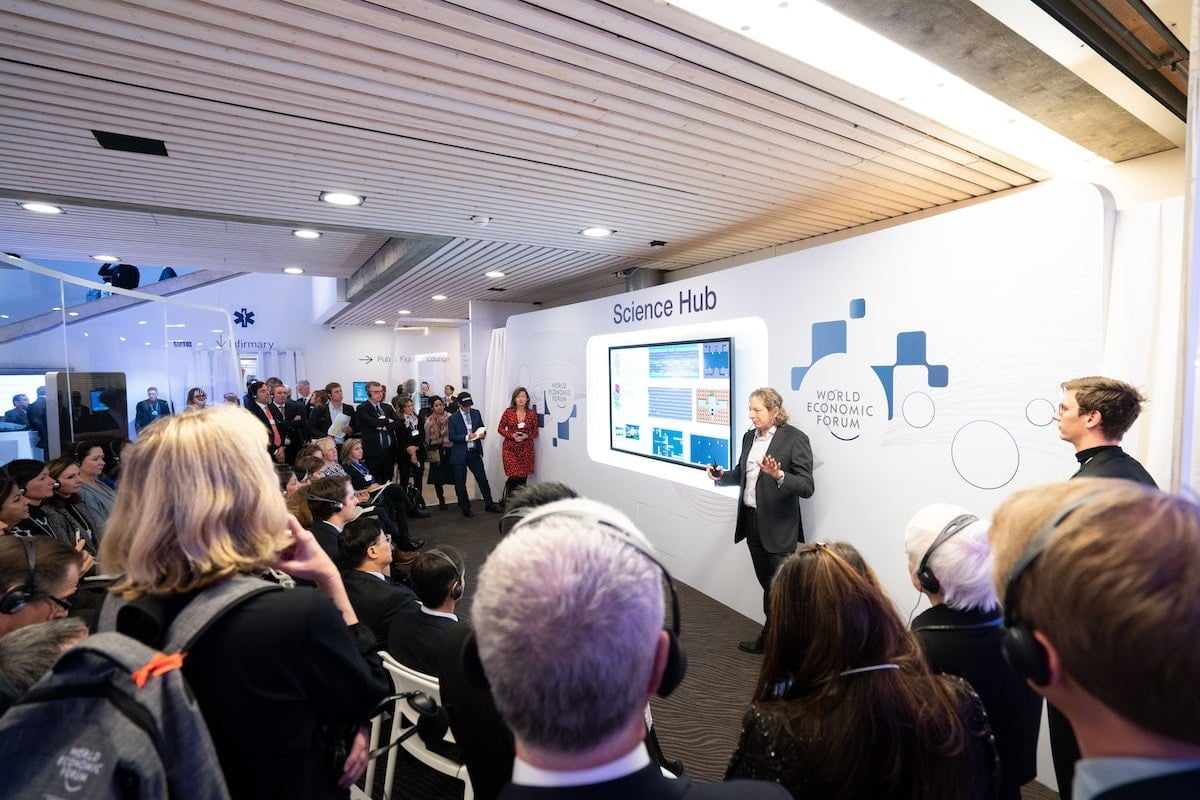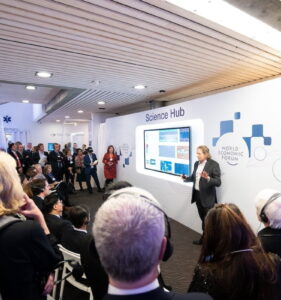In today’s rapidly evolving business landscape, innovation has become more important than ever. With technology changing at a breakneck pace and new competitors entering the market every day, businesses need to stay agile and be ready to adapt to new challenges.
One of the most effective ways to achieve this is through the use of the corporate innovation model. This approach involves creating a culture of creativity and experimentation within the organisation, allowing employees to develop new ideas and solutions to pressing business challenges.
There are several key elements that make up the corporate innovation model. These include:
- A focus on customer needs: In order to develop truly innovative solutions, it’s important to have a deep understanding of what customers want and need. By placing a strong emphasis on customer feedback and insights, businesses can develop products and services that truly meet their customers’ needs.
- A willingness to take risks: Innovation often involves taking risks and trying new things. Businesses that are able to embrace risk and accept failure as a natural part of the innovation process are more likely to succeed in the long run.
- Cross-functional collaboration: Innovation rarely happens in a vacuum. Instead, it often involves collaboration between employees from different departments and disciplines. By creating opportunities for cross-functional collaboration, businesses can tap into the collective knowledge and expertise of their entire organisation.
- An experimental mindset: The corporate innovation model is all about experimenting and trying new things. By adopting an experimental mindset, businesses can test out new ideas and approaches in a low-risk environment, and quickly pivot if things aren’t working out.
Overall, the corporate innovation model is an effective way to drive growth and stay competitive in today’s fast-paced business environment. By fostering a culture of creativity and experimentation, businesses can develop new ideas and solutions that keep them ahead of the curve.
Focus on customer needs
In today’s highly competitive business landscape, understanding customer needs has become more important than ever. By focusing on customer needs, businesses can create products and services that truly meet their customers’ expectations, which can lead to increased customer loyalty and business success.
One of the key elements of the corporate innovation model is a focus on customer needs. This involves gathering insights and feedback from customers, and using that information to inform the development of new products and services. By placing the customer at the centre of the innovation process, businesses can create solutions that truly address their pain points and solve their problems.
To effectively focus on customer needs, businesses need to start by gathering insights from their customers. This can be done through a variety of channels, including customer surveys, focus groups, and customer support interactions. By gathering feedback from customers at every stage of the customer journey, businesses can gain a deeper understanding of their needs and preferences.
Once businesses have gathered customer insights, they need to use that information to inform the development of new products and services. This might involve creating prototypes or conducting experiments to test out different ideas and approaches. By involving customers in the product development process, businesses can ensure that their solutions are truly aligned with their customers’ needs and preferences.
Finally, businesses need to continuously monitor and adapt to changing customer needs. In today’s fast-paced business environment, customer needs and preferences can change rapidly, and businesses need to be able to adapt to those changes quickly. By staying attuned to changing customer needs, businesses can continue to innovate and stay ahead of the competition.
Overall, focusing on customer needs is a key component of the corporate innovation model. By gathering insights from customers, using that information to inform product development, and continuously adapting to changing customer needs, businesses can create solutions that truly meet their customers’ expectations and drive business success.
A willingness to take risks
Taking risks is a fundamental element of the corporate innovation model. In order to truly innovate and drive growth, businesses need to be willing to take chances and try new things, even if there is a risk of failure. By embracing risk, businesses can open themselves up to new opportunities and stay ahead of the competition.
However, taking risks can be a daunting prospect for many businesses. Fear of failure, uncertainty, and the potential for financial loss can all make it difficult to take the leap into uncharted territory. But by developing a culture of risk-taking and experimentation, businesses can create an environment where taking risks is not only accepted, but encouraged.
One of the key ways to encourage risk-taking is to create a safe space for experimentation. This might involve setting up a separate innovation lab or team, where employees can test out new ideas and approaches in a low-risk environment. By giving employees the freedom to experiment and fail without fear of repercussion, businesses can encourage them to take risks and try new things.
Another way to encourage risk-taking is to celebrate failure as a natural part of the innovation process. By reframing failure as a learning opportunity, businesses can help employees see the value in taking risks, even if they don’t always pay off. This can help create a more positive and supportive culture, where employees feel empowered to take risks and try new things.
Finally, businesses need to be willing to invest in innovation, even if there is a risk of failure. This might involve allocating resources and funding to new projects, even if there is no guarantee of success. By investing in innovation, businesses can create an environment where taking risks is not only accepted, but actively encouraged.
In conclusion, taking risks is a crucial element of the corporate innovation model. By creating a safe space for experimentation, celebrating failure as a learning opportunity, and investing in innovation, businesses can encourage employees to take risks and try new things. By doing so, they can stay ahead of the competition and drive growth and success.
Cross-functional collaboration
Cross-functional collaboration is a key component of the corporate innovation model. By bringing together employees from different departments and disciplines, businesses can tap into a diverse range of perspectives and expertise, and develop more innovative and effective solutions to pressing business challenges.
In a traditional organisational structure, departments and teams often work in silos, with little communication or collaboration between them. This can lead to a lack of innovation and a limited perspective on business challenges. By breaking down these silos and encouraging cross-functional collaboration, businesses can create a more dynamic and innovative environment.
There are several ways to encourage cross-functional collaboration within an organisation. One of the most effective is to create opportunities for employees to work together on projects and initiatives. This might involve creating cross-functional teams to tackle specific business challenges, or bringing together employees from different departments to work on a new product or service.
Another way to encourage cross-functional collaboration is to foster a culture of communication and information-sharing. By encouraging employees to share their ideas and insights with colleagues from other departments, businesses can break down silos and create a more collaborative environment. This might involve creating a digital platform or other tool to facilitate communication and information-sharing.
Finally, businesses need to ensure that they have the right leadership and management in place to support cross-functional collaboration. This might involve appointing a cross-functional team leader or creating a dedicated innovation team to oversee the innovation process. By giving employees the support and resources they need to collaborate effectively, businesses can drive more innovation and growth.
In conclusion, cross-functional collaboration is a crucial element of the corporate innovation model. By breaking down silos, fostering a culture of communication, and providing the right leadership and support, businesses can tap into a diverse range of perspectives and expertise, and drive more innovation and growth.
An experimental mindset
An experimental mindset is a key component of the corporate innovation model. By adopting an experimental mindset, businesses can test out new ideas and approaches in a low-risk environment, and quickly pivot if things aren’t working out. This can help businesses stay agile and adaptable in the face of changing market conditions, and drive more innovation and growth.
To adopt an experimental mindset, businesses need to be willing to test out new ideas and approaches, even if there is no guarantee of success. This might involve conducting small-scale experiments or pilots to test out new products, services, or processes. By testing out new ideas in a controlled environment, businesses can quickly determine what works and what doesn’t, and adjust their approach accordingly.
Another key aspect of an experimental mindset is a willingness to embrace data and analytics. By collecting and analysing data on the results of experiments, businesses can gain insights into what is driving success and what needs improvement. This can help businesses make more informed decisions about where to focus their efforts and resources, and drive more effective innovation.
Finally, businesses need to be willing to pivot quickly if an experiment isn’t working out. By being agile and adaptable, businesses can respond quickly to changing market conditions or customer needs, and adjust their approach to better meet those needs. This might involve pivoting to a new product or service offering, or adjusting internal processes and procedures to better support innovation.
In conclusion, an experimental mindset is a crucial element of the corporate innovation model. By testing out new ideas and approaches, embracing data and analytics, and being willing to pivot quickly, businesses can stay agile and adaptable, and drive more innovation and growth.
The downsides of corporate innovation
While the corporate innovation model has many benefits, there are also potential downsides and challenges that businesses should be aware of. Some of the key downsides of corporate innovation include:
- Cost: Innovation can be an expensive process, requiring significant investment in research, development, and testing. This can be a challenge for businesses that are operating on a tight budget or facing financial constraints.
- Risk: Innovation often involves taking risks and trying new things, which can be scary for businesses that are risk-averse. There is always a chance that an innovation project will fail, which can result in financial losses or damage to the company’s reputation.
- Resistance to change: Innovation often requires a significant cultural shift within an organisation, which can be difficult to achieve. Employees may be resistant to change, or may not have the skills or experience needed to embrace new technologies or ways of working.
- Time: Innovation is often a long-term process, requiring significant time and resources to develop and implement new ideas. This can be a challenge for businesses that are focused on short-term results or facing pressure to deliver immediate returns.
- Competition: In today’s fast-paced business environment, the competition is fierce, and new players are entering the market all the time. This can make it difficult for businesses to innovate and stay ahead of the curve, as they are constantly being challenged by new and disruptive competitors.
Despite these potential downsides, it’s important for businesses to embrace the corporate innovation model in order to stay competitive and drive growth. By carefully managing costs and risks, overcoming resistance to change, and staying focused on long-term goals, businesses can successfully navigate the challenges of innovation and reap the rewards of a more agile and innovative organisational culture.


